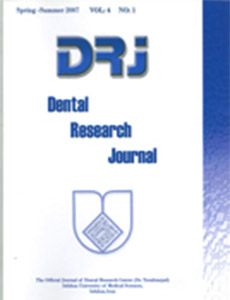Dental Research Journal
LUCA SCAPOLI1, AMBRA GIRARDI1, ANNALISA PALMIERI2, TIZIANO TESTORI3, FRANCESCO ZUFFETTI3, RICCARDO MONGUZZI4, DORINA LAURITANO5, FRANCESCO CARINCI2
1Departments of Histology, Embryology and Applied Biology, Centre of Molecular Genetics, CARISBO Foundation, University of Bologna, Bologna,
2Department of Medical-Surgical Sciences of Communication and Behavior, Section of Maxillofacial and Plastic Surgery, University of Ferrara, Ferrara,
3Dentistry, Galeazzi Hospital, Milan, Italy,
4Private Practice, Dentist, Milan, Italy,
5Neurosciences and Biomedical Technologies, University Milano Bicocca, Italy
Abstract
Background:
Periodontitis is a disease that affects and destroys the tissues that support teeth. Tissue damage results from a prolonged inflammatory response to an ecological shift in the composition of subgingival biofilms. Three bacterial species that constitute the red complex group, Porphyromonas gingivalis, Tannerella forsythia, and Treponema denticola, are considered the main pathogens involved in periodontitis.
Materials and Methods:
In the present study, a real‑time polymerase chain reaction bases assay was designed to detect and quantify red complex species, then used to investigate 307 periodontal pocket samples from 127 periodontitis patients and 180 controls.
Results:
Significant higher prevalence of red complex species and increased amount of P. gingivalis and T. denticola were detected in periodontal pocket of periodontitis patients.
Conclusions:
Results demonstrated that the test is a valuable tool to improve diagnosis of periodontal disease.

